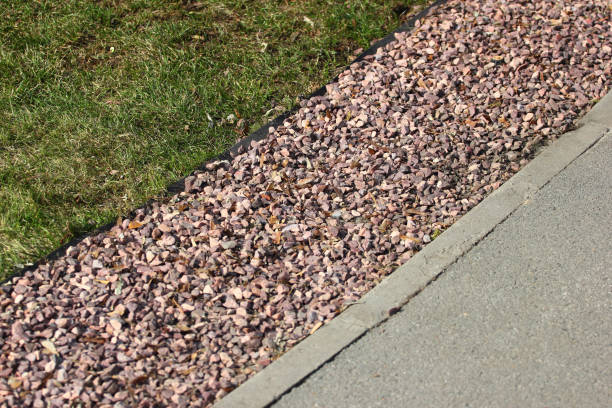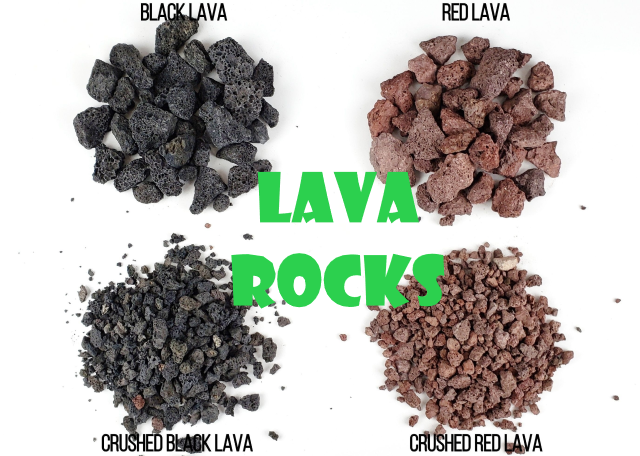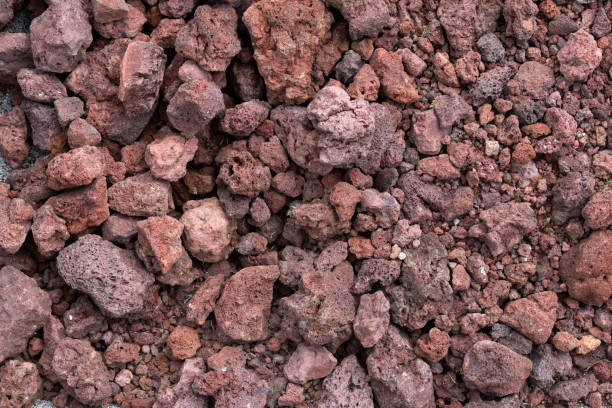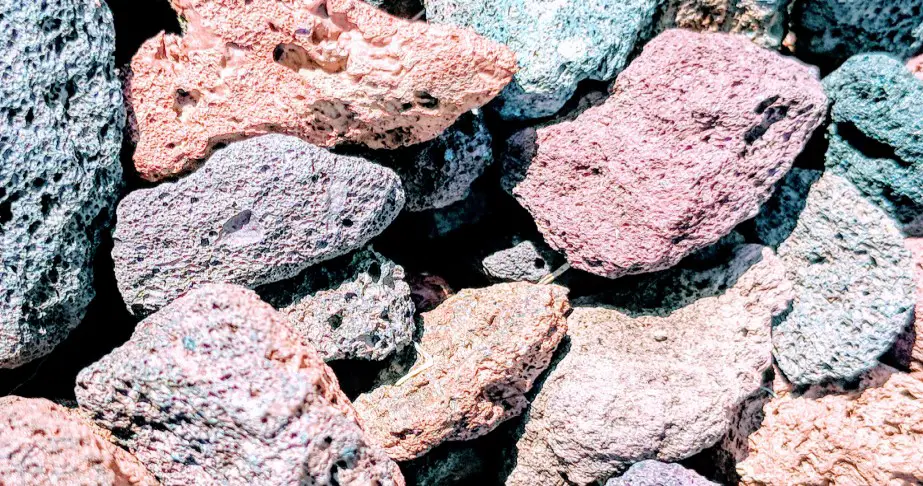Proper drainage is a crucial aspect of various applications, whether it’s gardening, landscaping, construction, or indoor plant care.
When faced with the challenge of creating an efficient drainage system, one material that comes to mind is lava rock.
Renowned for its exceptional properties and versatility, lava rock has become a go-to option for both horticulturists and passionate plant enthusiasts alike.
But is it a good choice for drainage?
Let’s explore its ability to enhance drainage
Is Lava Rock Good for Drainage?
Yes, lava rock is undeniably an excellent choice for drainage purposes.
Its unique properties and benefits make it highly effective in facilitating proper water flow and preventing waterlogged soil.
5 Reasons Why Lava Rocks Are Good for Drainage

1. Porosity and Permeability
Lava rock’s porosity is a key factor in its effectiveness for drainage.
The sponge-like structure allows water to easily infiltrate and pass through its interconnected pores.
As a result, excess water is efficiently drained away from the soil, preventing water saturation and the associated problems of waterlogged soil, such as root rot and nutrient leaching.
The porosity of the rock ensures that water moves freely through the material, promoting proper drainage.
2. Aeration and Root Health
In addition to facilitating water drainage, the porous structure of lava rock also plays a vital role in promoting optimal aeration within the soil.
Adequate air circulation is crucial for healthy root development and overall plant vitality.
Lava rock’s porous nature allows for the movement of air through the soil, supplying oxygen to the roots.
Improved aeration prevents root suffocation and encourages robust root growth, leading to healthier and more resilient plants.
Related: How to Use Lava Rocks for Plants (Ultimate Guide)
3. Soil Structure Enhancement
The rock acts as a soil amendment that helps enhance soil structure.
When it is incorporated into the soil, it creates air pockets and interstitial spaces. These spaces reduce soil compaction and for better water infiltration and drainage.
The presence of lava rock in the soil also helps prevent the formation of dense, compacted layers that hinder root penetration and nutrient uptake.
By improving soil structure, lava rock promotes a healthy growing environment for plants, supporting their overall growth and development.
4. Durability and Longevity
Lava rock is known for its exceptional durability and resistance to decay.
Unlike organic drainage materials, such as wood chips or peat moss, which can break down over time, lava rock maintains its structural integrity for an extended period.
Its resilience ensures that it continues to provide effective drainage over the long term without deteriorating or disintegrating.
This durability makes the rock a reliable and long-lasting drainage solution, reducing the need for frequent replacements and saving both time and resources.
5. Versatility and Compatibility
One of the significant advantages of lava rock for drainage is its versatility and compatibility with various applications and soil types.
Whether you’re working on a garden, landscaping project, construction site, or caring for indoor plants, lava rock can be incorporated seamlessly.
It adapts well to different environments and soil compositions, making it a practical choice for a wide range of projects.
Its compatibility with diverse plant species and soil types ensures that it can be utilized effectively in various settings, providing reliable drainage solutions tailored to specific needs.
Related: How to Clean Limestone Landscape Rocks
Key Factors to Consider When Using Lava Rocks for Drainage

While lava rock offers numerous advantages as a drainage medium, there are important factors to consider to ensure optimal results:
Size and Gradation
The size and gradation of lava rock play a significant role in its effectiveness for drainage. Choosing the right size is important to prevent potential issues.
Smaller lava rocks may create a compacted layer that restricts water flow, leading to poor drainage. On the other hand, larger rocks may leave gaps that hinder water movement.
Select a size that suits your specific project and goals.
A mix of different sizes can provide an ideal balance, allowing for proper water drainage while preventing clogging or gaps.
Installation and Layering Techniques
Proper installation techniques can maximize the benefits of lava rock in different applications.
When using the rock for drainage, it’s often recommended to employ layering techniques.
For instance, using geotextile fabric as a barrier between the soil and the rock can prevent soil erosion while allowing water to pass through.
This layering technique ensures efficient water drainage and helps maintain the integrity of the system over time.
Potential pH and Mineral Impact
The mineral composition of lava rock can have an impact on the pH level of the soil.
Before incorporating the rock into your soil, test the pH and monitor it regularly.
The minerals present in the rock can affect the pH, potentially making it more alkaline.
Some plants prefer specific pH levels, so it’s essential to ensure that the pH remains suitable for the plants you’re growing.
Adjustments to pH may be necessary, such as adding amendments to maintain optimal growing conditions for your plants.
Maintenance and Cleaning
Regular maintenance is necessary to ensure the efficiency of your lava rock drainage.
Over time, debris, sediment, and organic matter may accumulate within the rock, potentially causing blockages and hindering water flow.
It’s important to periodically inspect and clean the drainage system.
Flushing the system with water can help remove debris and sediment, ensuring unobstructed water movement.
By maintaining the cleanliness of the lava rock drainage system, you can optimize its performance and prevent potential issues.
Related: How to Clean Lava Rock Landscaping
Potential Limitations and Challenges of Using Lava Rocks for Drainage

While lava rock offers numerous benefits for drainage, it’s important to be aware of some potential limitations and challenges that may arise when using it:
Water Retention
Due to the highly porous nature of the rock, it tends to drain water quickly.
While this is advantageous for preventing waterlogged soil, it can also result in faster water evaporation and the need for more frequent irrigation.
Closely monitor soil moisture levels and adjust your watering schedule accordingly to ensure plants receive adequate hydration.
Weight and Transportation Considerations
Lava rock can be relatively heavy, especially when dealing with larger quantities or large-scale projects.
Consider the weight and logistics of transporting it to your desired location.
Assess the availability of suitable transportation methods and equipment, as well as any potential limitations on weight capacity.
Also, factor in the physical effort required for handling and installing the rock, particularly if you’re working on a project with limited manpower.
Cost Analysis
While lava rock is generally affordable, it’s essential to conduct a thorough cost analysis, particularly when compared to alternative drainage materials.
Take into account the scale of your project and your budgetary constraints.
Consider the cost of purchasing the rock, any additional materials required for installation or maintenance, and any long-term cost implications.
It may be beneficial to compare the cost-effectiveness of the rock with other drainage options to ensure that you’re making the most economical choice.
Related
- Shadow Box Fence Pros and Cons
- Shadow Box Fence Vs Board on Board Fence (Side by Side Comparison)
- Best Paslode Framing Nailers Review
- Top 5 Freeman Framing Nailers Review
- Best Numax Finish & Framing Nailers Review
- 8 Best Metabo Framing Nailers Review
- Monument Grills Vs Weber Grills Review
- Advantages and Disadvantages of Dog Eared Fence
- How to Clean Limestone Landscape Rocks (Step by Step)
- How to Clean Lava Rock Landscaping: Simple Steps to Try


